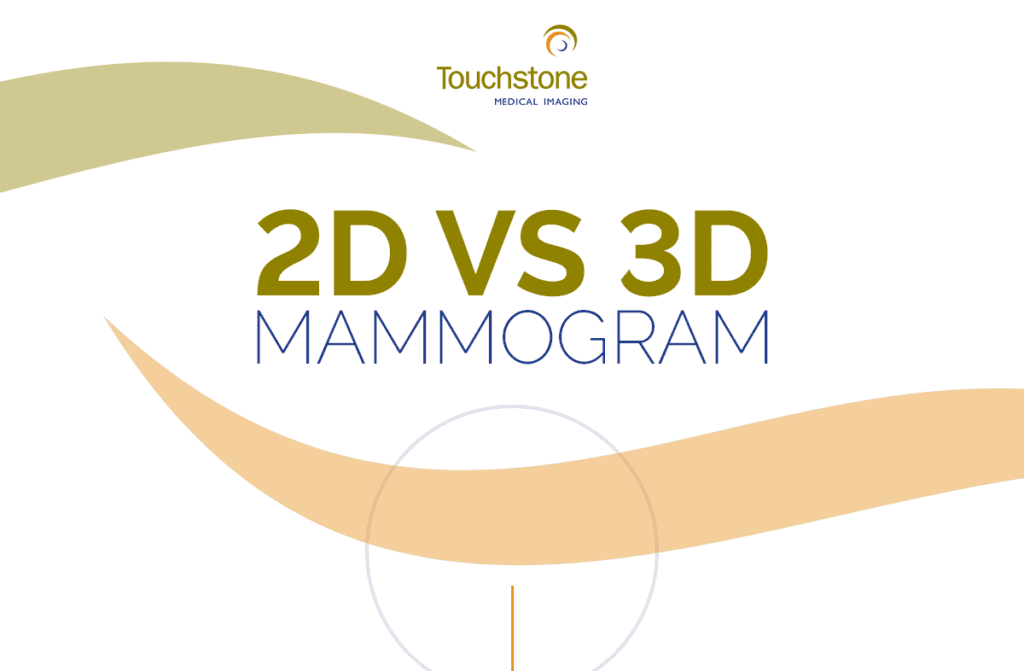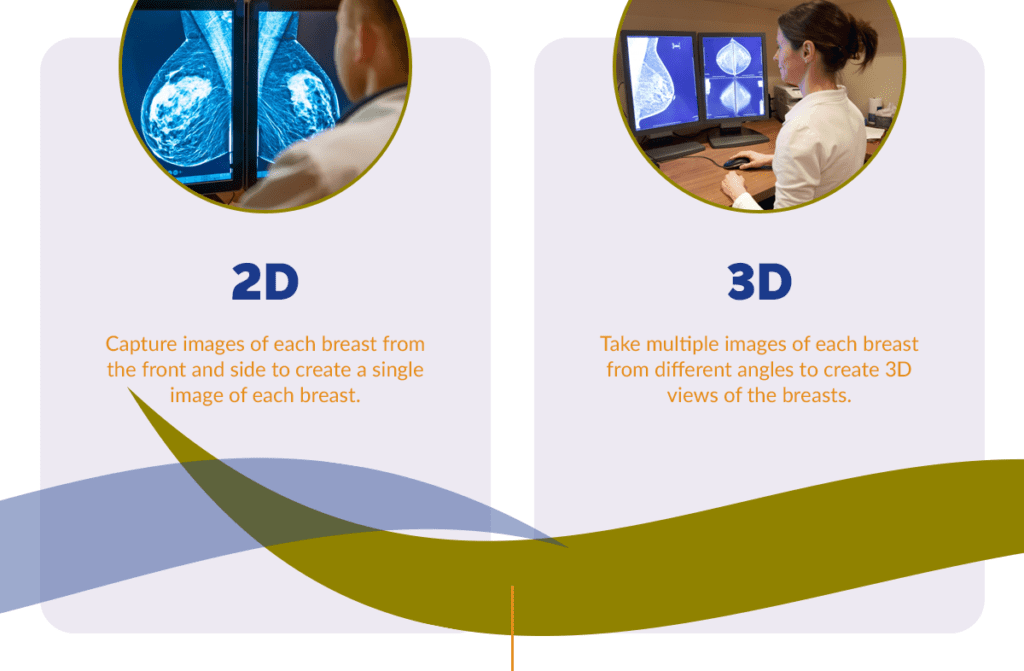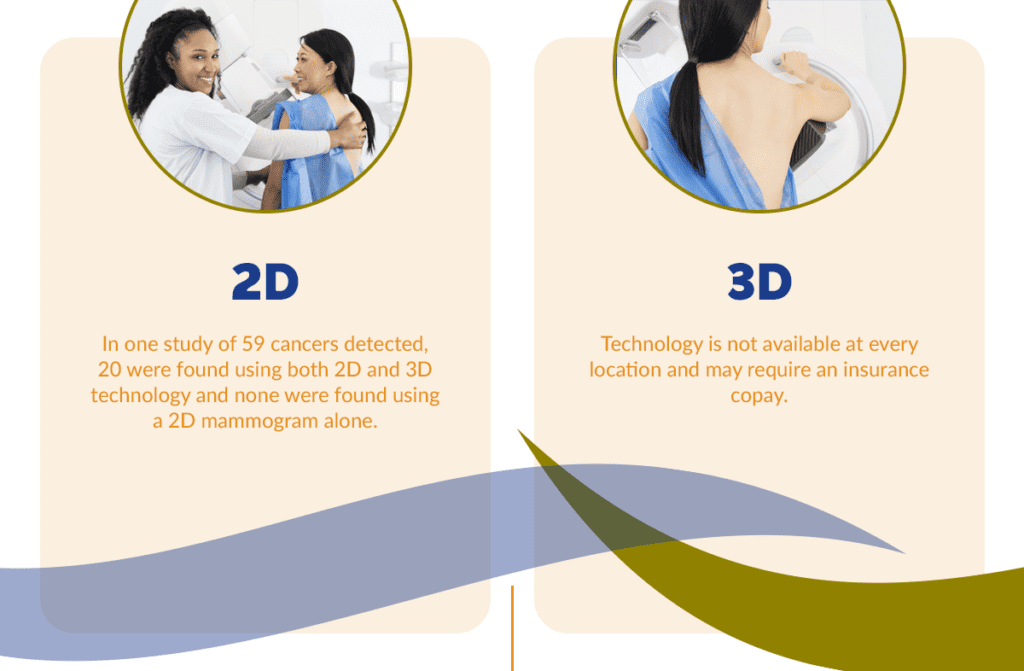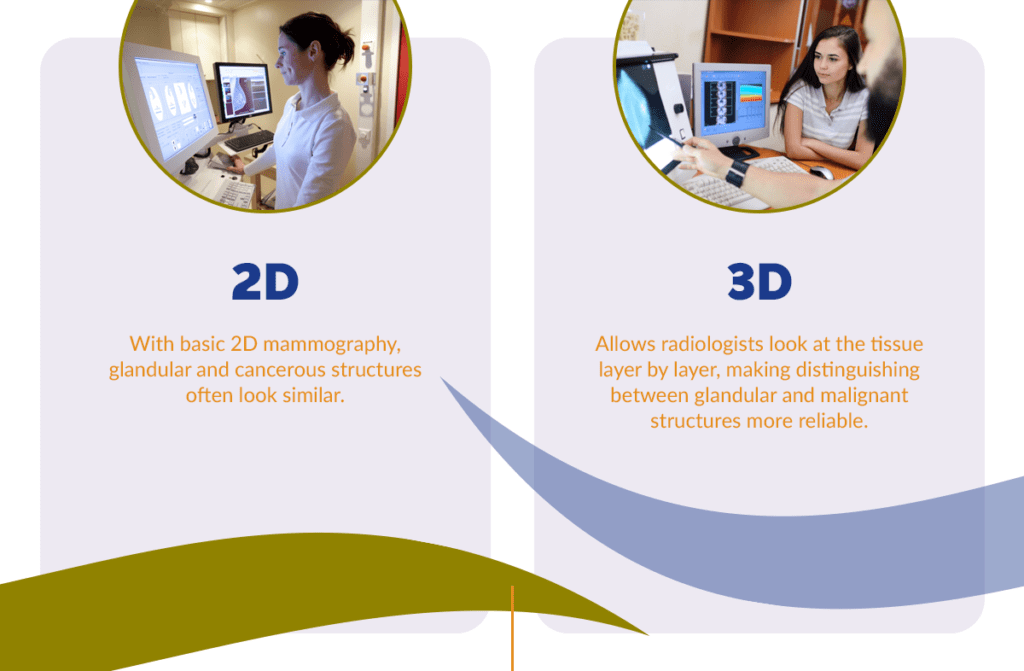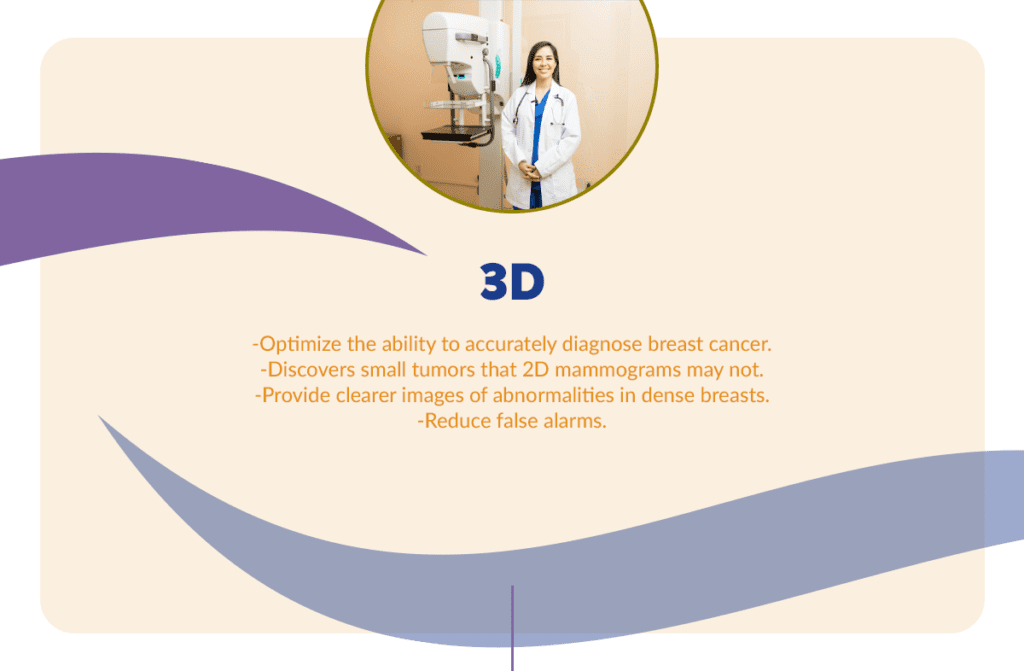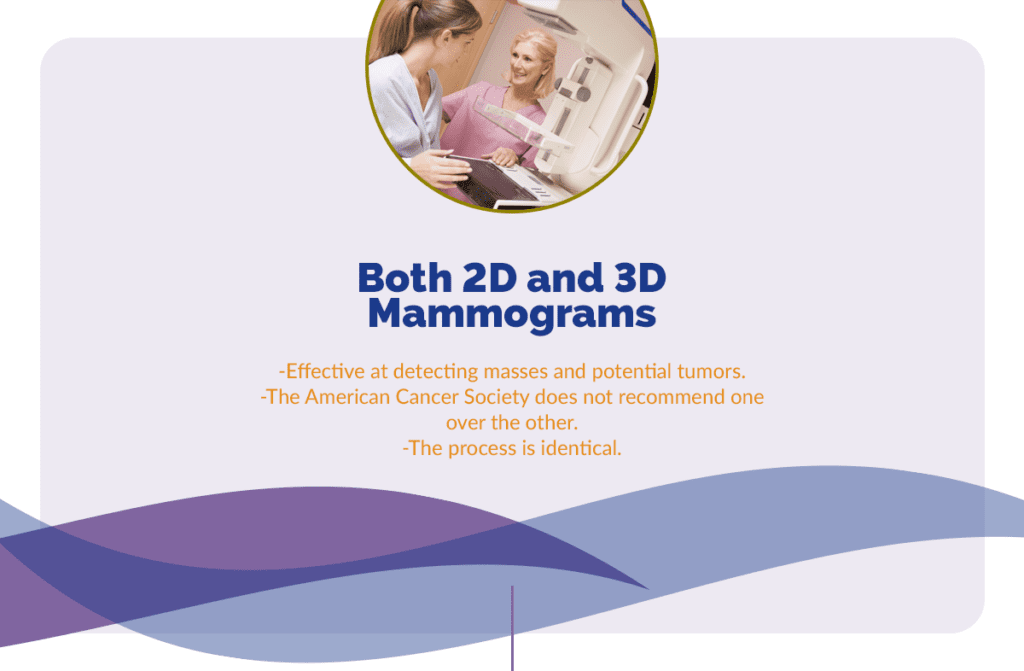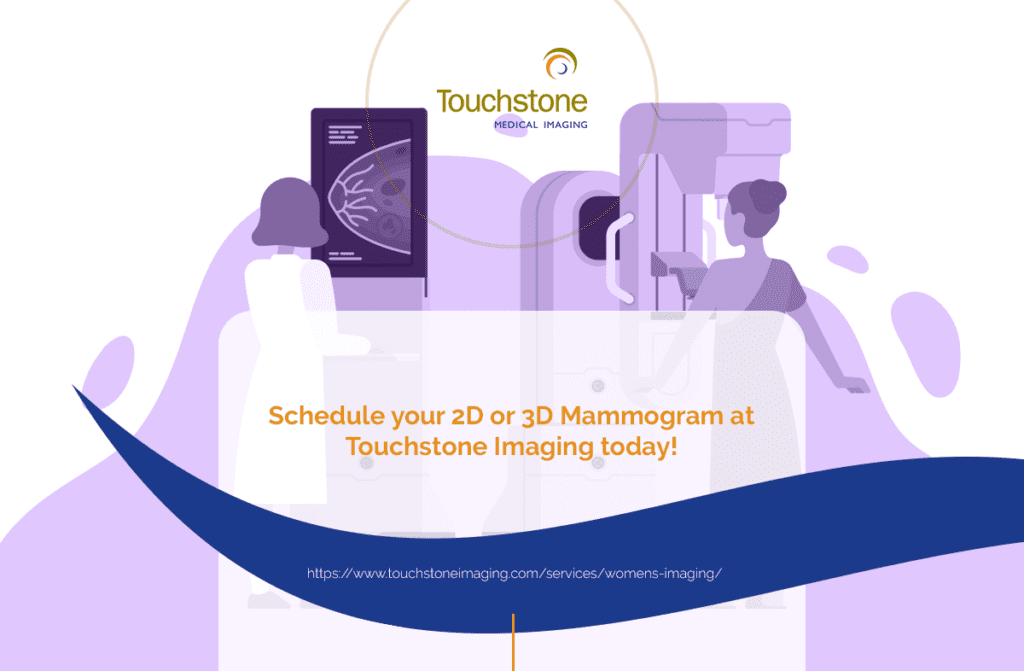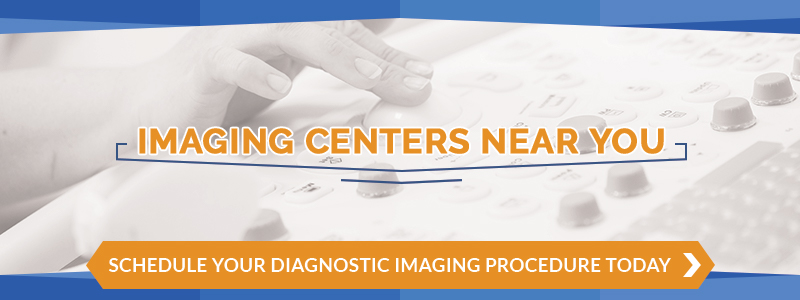Mammography is one of the most useful tools that doctors and medical imaging specialists have when it comes to early detection of breast cancer. Traditionally, mammography has been conducted on a two-dimensional scale, producing a top and bottom-level view of the breast tissue. While this can be useful in some instances, it doesn’t provide a full picture of what is really going on with the internal tissue of the breast.
3D mammography is a solution to this visualization problem. Like the pages of a book that are stacked and bound together, 3D mammography produces multiple images of the breast tissue at top, middle, and bottom regions. This process provides a comprehensive representation of the tissue, including its internal (and otherwise invisible) layers.
Most modern imaging specialists will recommend that women receiving a mammogram opt for the 3D technology because it has been proven to detect cancer sooner and more reliably than its 2D predecessor. In this article, we’ll review some of the important facts to know about 3D mammography, including the numerous reasons that women should consider this medical imaging examination the next time they go for an annual checkup.
For more information on 3D mammography, please visit our associated resource page at Touchstone Medical Imaging.
What is 3D Mammography?
Before delving into the various features and benefits of 3D mammography, it’s important to understand what the technology itself consists of and what purpose it serves. Simply put, a 3D mammogram, also known as breast tomosynthesis, is an X-ray photo visualization of the breast and its tissue layers. Multiple X-ray slides are captured, creating a more comprehensive and informative image of the patient receiving the examination.
3D mammography is used to assess women for signs of breast cancer that may not be visible or apparent. For this reason, mammography is considered a preventative technique; that is, the goal is to receive mammograms before any seriously negative symptoms or problems crop up. When women can physically feel or notice a lump or nodule in their breast, it is possible that cancer has already advanced past initial stages of development.
Thus, it is crucial that women who are 45 or older receive annual mammography examinations, as risk for breast cancer and other cancers increases significantly following menopause and associated hormonal changes (e.g. decreased estrogen and progesterone). These risks should remain a pertinent concern and be regularly assessed throughout the natural aging process.
Why is 3D Mammography Better than 2D Imaging Alone?
3D mammography is generally seen as the more effective option for breast cancer detection because it can better discern signs and indicators that would be impossible to make out on a 2D radiological image alone. Indeed, the Mayo Clinic reports that a 3D mammogram will detect one more positive and accurate case of cancer per 1,000 women than a standard mammogram by itself. In addition to all this, there tends to be fewer necessary follow-up sessions (and therefore less radiation exposure) when patients choose 3D mammography, especially when combined in the same session with a supplementary 2D imaging test.
Can You See More Detail With a 3D Mammogram?
One of the greatest advantages of choosing a 3D mammogram is its ability to detect cancer in the dense tissue of the breast. In a woman’s breasts, the primary structures consist of supportive tissues, milk glands, milk ducts, and fatty tissue. Some women have a higher ratio of dense tissue than fatty tissue, and although there are no inherent risks associated with this structural difference, dense breast tissue does not appear as clearly on a 2D mammogram as it does on a 3D model.
This is because the superficial X-rays of a 2D mammogram cannot detect the presence of dense tissue, which appears to be white on traditional imaging devices. This is problematic because cancerous areas of breast tissue also appear white on a traditional mammogram. Thus, women with a greater amount of dense breast tissue are better off with a 3D mammogram or some combination of traditional and multi-layered techniques.
Are There Risks Associated with 3D Mammography?
Like any medical imaging test, there are some minor risks that should be explained and understood prior to the procedure. For one, the 3D mammography uses multiple beams of X-rays, which carry a low dose of radiation. When used in tandem with a traditional mammogram, this radiation exposure slightly increases. However, some medical imaging machines are capable of performing a 3D and 2D mammogram simultaneously, thereby reducing the overall exposure to X-ray radiation.
Although mammography is generally quite effective in detecting breast cancer, there are some less common instances in which it may identify a growth or tissue clump that turns out to be benign. This may cause a bit of additional worry and stress for the patient, but most people agree that it is better to be safe than sorry, so a false alarm is more favorable than an actual cancerous growth.
Lastly, it’s important to know that 3D mammography (and traditional mammography, for that matter) cannot detect all types and forms of cancer. If the cancer is extremely small, in the early stages of development, or located in a region that is difficult to image, it may not be possible to discern the condition through mammography alone.
What Should I Do to Prepare for a 3D Mammogram?
First, check with your local Touchstone Medical Imaging center to see if they offer 3D mammography. Then confirm with your insurance provider that this service is covered (and the odds are good that it will be!). If you are still having regular periods, you should aim to schedule your mammogram appointment on a date that does not coincide with your monthly cycle, as some women experience breast tenderness during this time. Sensitivity in the breast tissue can make the procedure less comfortable than it would be at a time when you are not menstruating.
Lastly, as odd as it may sound, refrain from wearing deodorant to your mammogram appointment. The metallic particles that produce antiperspirant and anti-odor effects can actually interfere with the medical imaging results. Same goes for some lotions and powders; avoid wearing these on your upper body on the day of the breast examination.
Conclusion
3D mammography is one of the best preventative medical imaging technologies available for early detection of breast cancer. It is recommended by health professionals that women receive mammograms on an annual basis no later than the age of 45, although some individuals with a family history of cancer should consider receiving the procedure as early as age 40.
Touchstone Medical Imaging is one of the leading providers of diagnostic imaging in the United States, and our facilities are located in dozens of cities nationwide. We use only the highest quality radiology equipment, operated by professionally trained and certified medical imaging specialists. To schedule your appointment for a 3D mammogram or another diagnostic assessment, please visit our website at your earliest convenience.


